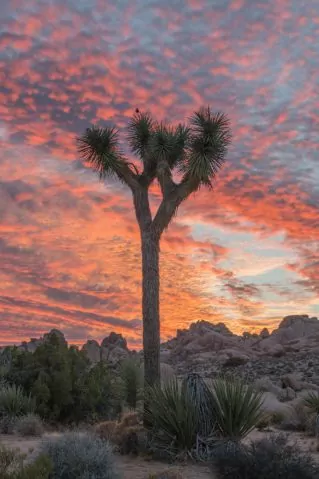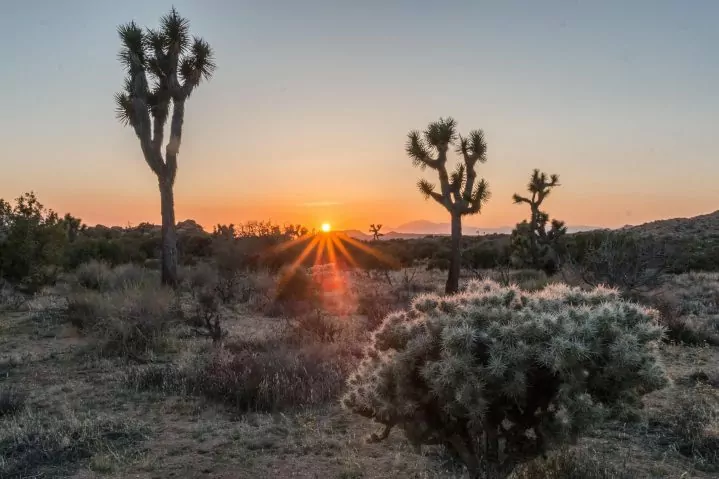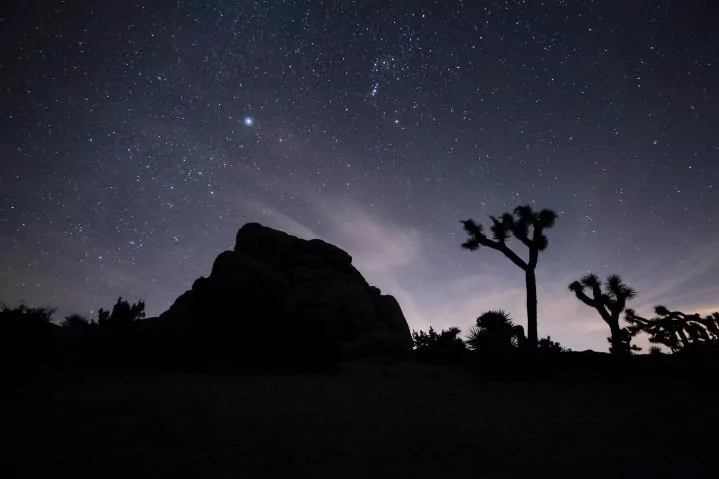Getting to Know Joshua Tree

The yucca brevifolia- more commonly known as the Joshua Tree – looks more like an illustration in a fictional Dr. Seuss book than it does an actual plant. It can have multiple windy arms and spiky leaves and is perhaps the most iconic plant of the Mojave Desert. You may have seen these unique plants in the background of many modern-day commercials, movies, and music videos. Even the late, great Selina has danced around these whimsical desert plants.
This unique plant is found only in the Mojave Desert- nowhere else in the world- and grows at elevations between 2000- 6000 feet. Joshua Trees can be 15- 40 feet in height and can live for over 150 years. The Joshua Tree got its name from Mormon pioneers who thought it resembled the prophet Joshua Raising his arms in praise.
The Joshua Tree & The Yucca Moth: An Unlikely Partnership

The Joshua Tree and the yucca moth have a special partnership as neither would exist without the other. The yucca moth is the only insect that pollinates the Joshua Tree. The moth collects pollen from Joshua Tree flowers and deposits it on other flowers as it moves throughout the desert. The yucca moth has even evolved to have organs near its mouth specifically for transferring pollen. The reason the moth is so concerned with ensuring the Joshua Tree’s survival is because it relies on the plant for the food source of its larvae. As the yucca moth pollinates the Joshua Tree, it also lays its eggs in the flower’s pods. When the larvae hatch, they eat the seeds of the Joshua Tree pod- their only meal for their entire life- before crawling to the ground and building a cocoon. Without the yucca moth, Joshua Trees would not be pollinated and without the Joshua Tree the yucca moth wouldn’t have a place to lay its egg, nor food for its larvae. As a result, this symbiotic relationship has been going on for millions of years.
Why Some Joshua Trees Have So Many Branches

As you walk through the Mojave Desert, you’ll pass many Joshua Trees (there’s over a million in the national park alone) but you may struggle to find two that look the same. Some Joshua Trees have many big, windy branches, while others are growing straight up without branches at all. Barber’s Pole, the tallest Joshua Tree in the park, grew straight up for 35ft before it started growing branches.
How many branches a Joshua Tree has is dependent on how many times it has bloomed. In a desert with less than 6 inches of rain a year, properly-timed winter rain is crucial to the blooming cycle of Joshua Trees. After a Joshua Tree has flowered, the blossom eventually dries up and falls off leaving a dead piece of stalk. It’s at this point that a new branch grows in a completely different direction. Joshua Trees with many branches have bloomed many times, while Joshua Trees that are growing straight up have never bloomed at all.
Is a Joshua Tree Even a Tree?

Joshua Trees have long perplexed scientists. With its long, windy branches and straight, spikey leaves it certainly is a desert oddity. American explorer John C. Fremont once described them as the “most repulsive tree in the vegetable kingdom,” but is Joshua Tree even a tree? In short, the answer is no. Joshua Trees do not have annual rings in their trunks like proper trees do. Scientists are only able to estimate a Joshua Tree’s age base on how tall it is- they grow roughly ½” a year once they reach maturity.
Previously, it was believed that they were a member of the Lily family but recent DNA studies have placed them in the Agave family. They are closely related to the Mojave yucca- both of which grow inside of the park- and are often times mistaken for the other. Mojave yuccas, however, have longer, wider leaves with threads curling off the leaves. Joshua Tree leaves are both shorter and thinner and have no fibrous threading.




